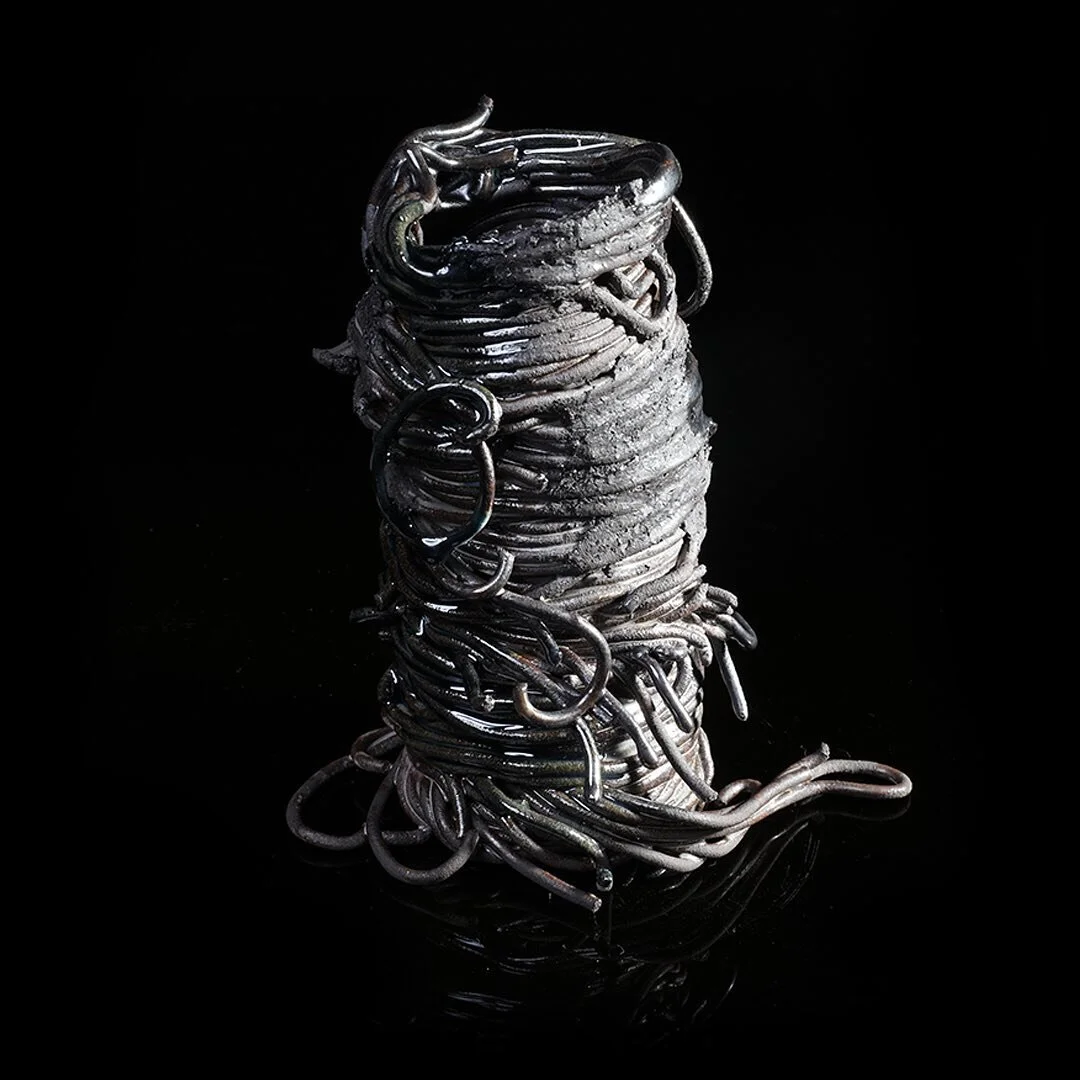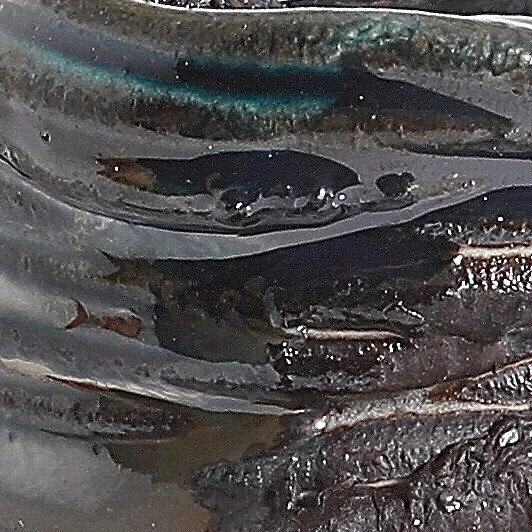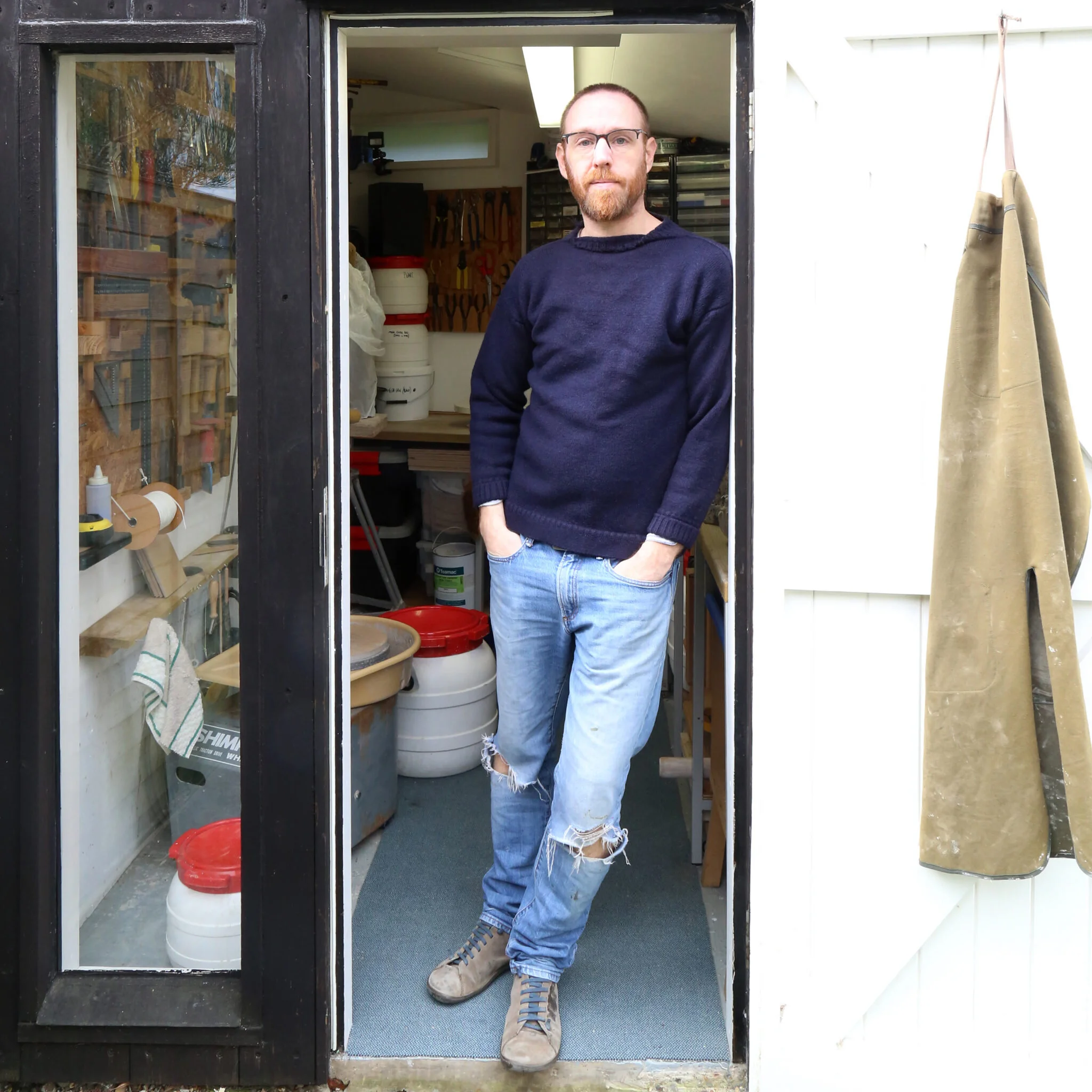Black Glazes
A deceptively complex challenge...
Having trained via a Fine Art pathway I have long been aware of the power and importance of White. Sculptors, primarily concerned with Form (traditionally at least), employ white’s reflective qualities, and the myriad shades of grey towards black, in order to reveal this Form at its most complete. Long ago we accepted that the ‘white cube’ was where we would show our Art, and then there is the connotation of purity we have imbued White with.
For me it seemed logical to first develop a series of white, and off-white, glazes, and I fully intend to continue doing so: such is the allure of those endless combinations of opaque, translucent, pearlescent, opalescent, chalky, sugary, cracked, foaming, volcanic, and milky.
And precisely because of the sense, and logic, the real challenge is to question it, and explore the opposite.
Black glazes, I naively supposed, would be similar to White, and I thought it also an opportunity to test blends of black clay bodies.
It became clear pretty quickly that I was easily creating flat blacks and off-blacks. - glazes which appeared thin, superficial, clinical or that just lacked the depth and richness I’d been more easily able to achieve with whites.
One breakthrough came while testing how much a slip with a very high iron/manganese/cobalt oxide content might over-flux a glossy, translucent glaze. In order to speed up the testing, I used a deep blue translucent glaze (one that I knew well and had to spare), over various slips, on a “black” clay which was in fact remarkably red. Of course, the parts of the pot which technically were not the test, proved the most informative(!)
Where the deep blue translucent glaze sat on the deep red clay, the resultant combination appeared gloriously alive and unfathomable. This approach saw different wavelengths of light being absorbed by the glaze, than those absorbed by the clay body, leaving a mercurial onyx black, playing from warm to cool.
Later I looked to those metallic effects which we see in graphite, where grey-reflective-silver shifts to deep black depending on how the light glances across it. And of course I altered the textures, by including a paste-like quality in the palette of surfaces I would work with. Stainless steel filings, along with tiny mica flakes added further to what was quickly becoming a series of work which I would later call ‘Eve’.
Works in the Eve series would ultimately employ two different blends of black clays, two different engobes, about six different high and low temp glazes., along with black grogs, metal filings, and mineral ‘sprinkles’…















